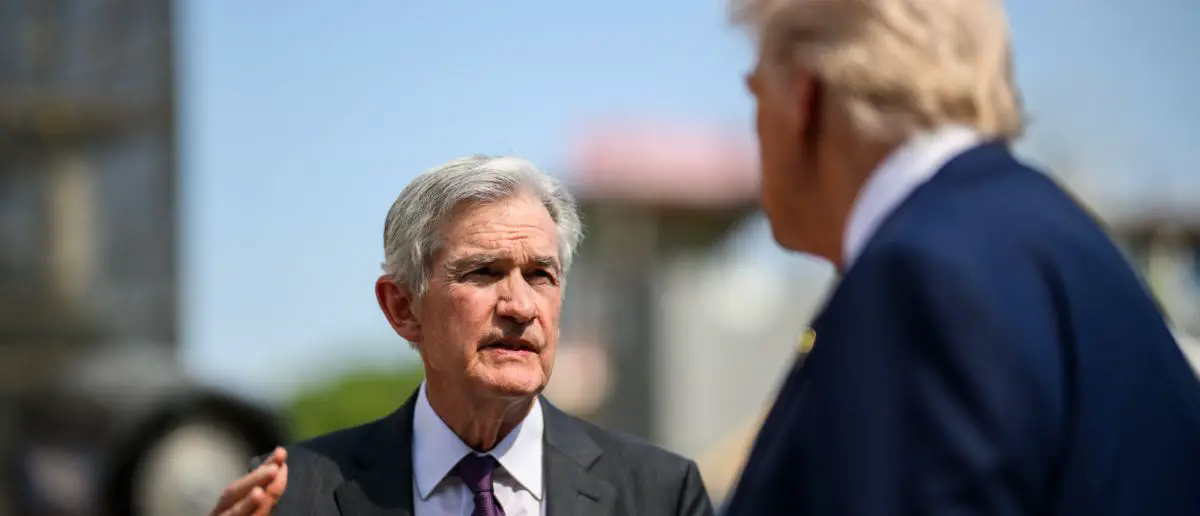
The central banking system is supposed to keep things stable and smooth. It doesn’t take a degree in economics to realize that isn’t true.
And now the Federal Reserve may have lost control after a stunning report was released.
Federal Reserve’s July Meeting Highlights Concerns Over Inflation and Labor Market Amid Tariff Uncertainty
On August 20, the Federal Reserve released minutes from its July 29-30 meeting, revealing deep concerns among officials about inflation, the labor market, and the uncertain economic impact of President Donald Trump’s tariffs.
The Federal Open Market Committee (FOMC) voted to maintain the federal funds rate at 4.25%-4.5%, a level unchanged since December 2024, despite dissent from Governors Christopher Waller and Michelle Bowman, who argued for a rate cut to address emerging labor market weaknesses. This marked the first time in over 30 years that multiple governors opposed a rate decision, exposing internal divisions within the Fed and raising questions about its ability to navigate competing economic pressures effectively.
Internal Divisions and Economic Risks
The minutes highlighted a split among policymakers, with most prioritizing the risk of inflation over labor market concerns, while a minority saw employment as the more pressing issue. The Fed’s dual mandate—maintaining price stability and maximizing employment—was central to the debate, with participants noting “upside risk to inflation and downside risk to employment.”
The majority viewed inflation, driven partly by Trump’s tariffs, as the greater threat, fearing that rising prices could become entrenched if inflation expectations become “unanchored.” However, Waller and Bowman emphasized the labor market’s fragility, citing slowing job growth and weakening consumer spending as reasons for immediate action.
The Fed’s cautious stance was criticized as overly conservative, with detractors arguing it risks exacerbating economic slowdown by delaying rate cuts.
Data released shortly after the meeting on August 1, emphasized these concerns, showing weaker-than-expected job growth for July and downward revisions for May and June, with June recording a net loss of 13,000 jobs—the first such decline since December 2020. Critics contend the Fed’s hesitation reflects a disconnect from real-time economic signals, potentially allowing labor market deterioration to worsen.
Tariff Concerns and Political Pressure
Trump’s tariffs, a focal point of the discussion, introduced significant uncertainty. The minutes noted “considerable uncertainty remained about the timing, magnitude, and persistence of the effects of this year’s increase in tariffs,” with fears that they could drive sustained inflation. Some officials suggested tariffs might cause only temporary price spikes, while others warned of impacts if businesses pass costs to consumers.
This uncertainty has placed the Fed in a bind, as lowering rates to support jobs could fuel inflation, while maintaining high rates risks stifling growth.
President Trump intensified pressure on the Fed, publicly criticizing Chair Jerome Powell as “stupid” and “a loser” and demanding rate cuts to stimulate the economy. His administration’s actions, including the resignation of Governor Adriana Kugler and calls for Governor Lisa Cook’s resignation over unproven mortgage fraud allegations, have raised concerns about political interference in the Fed’s independence.
Trump’s nomination of Stephen Miran, a White House economic adviser who downplays tariff-driven inflation, to fill Kugler’s seat further signals an intent to steer monetary policy. Critics argue this politicization undermines the Fed’s credibility, potentially destabilizing markets and inflation expectations.
Economic Context and Outlook
The Fed’s staff described economic growth in early 2025 as “tepid,” despite low unemployment, with consumer spending and job growth showing signs of strain. The July meeting preceded a troubling jobs report, but officials already noted “downside risk to employment had meaningfully increased.”
The Consumer Price Index (CPI) rose to 2.9% in August, driven partly by tariffs, with core inflation at 3.1%, signaling persistent price pressures. This data, coupled with a labor market showing a four-year high unemployment rate of 4.3%, has intensified calls for a rate cut at the Fed’s September 16-17 meeting, with markets estimating an 88% chance of a 0.25% reduction.
Critics of the Fed argue its prolonged high-rate policy, justified by tariff fears, may be choking economic activity unnecessarily. The central bank’s reluctance to act decisively, despite clear labor market warning signs, risks tipping the economy toward recession, especially as tariff costs strain consumers and businesses.
Powell’s upcoming Jackson Hole speech on August 22, is expected to clarify the Fed’s direction, but skepticism persists about whether the Fed can balance its dual mandate without succumbing to political pressures or misjudging tariff impacts.





